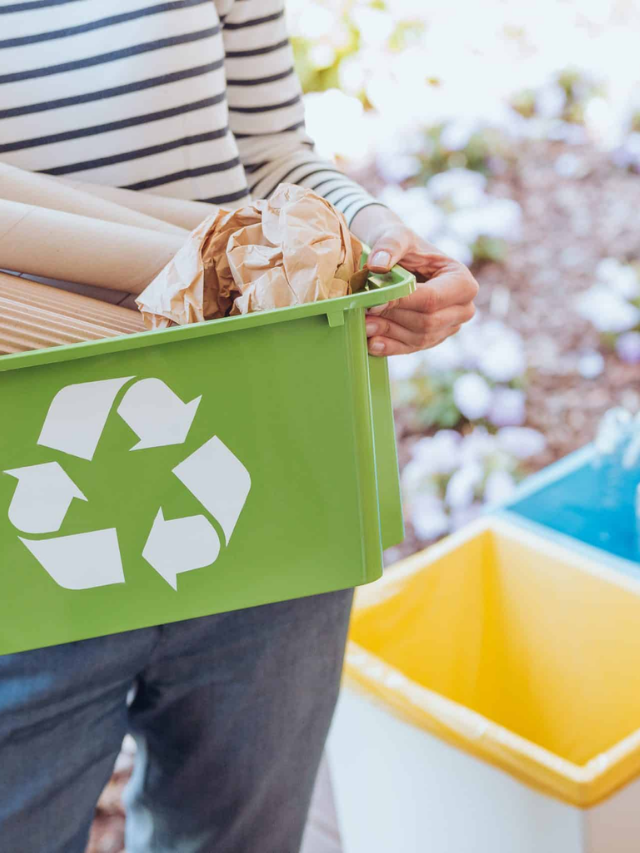Introduction
Plastic waste, particularly PET (polyethylene terephthalate), poses a significant global challenge, contributing to environmental pollution and resource depletion. While PET is highly recyclable, inefficiencies in the recycling process—such as contamination, excessive energy use, and inconsistent material quality—hinder large-scale adoption. Labotek’s Conti Crystallizer enhances PET recycling by improving crystallization, ensuring superior material purity, energy efficiency, and sustainability.
The Role of Crystallization in PET Recycling
Before PET can be effectively reprocessed, it must undergo crystallization, a process that transforms amorphous PET—prone to clumping and sticking—into a stable, free-flowing crystalline form. Proper crystallization enhances thermal stability, preventing processing issues in subsequent steps like extrusion and pelletizing. Conventional methods demand high energy and extended processing times, limiting large-scale recycling efficiency.
How Labotek’s Conti Crystallizer Works
Labotek’s Conti Crystallizer is designed for continuous crystallization of non-crystalline PET, a crucial step in the recycling process. It is available in two configurations:
Vacuum Conveying (Type V): Ideal for amorphous granular PET.
Screw Conveying (Type S): Suitable for regrind materials like bottle flakes or sheets.
This advanced system efficiently converts amorphous PET into crystalline PET within just 15–20 minutes, depending on material type and surface area.
Key Features & Benefits
Labotek’s Conti Crystallizer is designed for continuous processing, ensuring a steady material flow that minimizes energy waste and enhances efficiency. Its advanced heat management system optimizes energy consumption while maintaining precise crystallization temperatures.
The system also prevents cross-contamination by keeping amorphous and crystalline PET separate, improving the quality of the recycled material. Available in multiple capacities, including models like CC80 and CC160, it accommodates different production scales. Additionally, the integration of a Siemens PLC and a user-friendly 6-inch touch panel provides precise control, automation, and real-time monitoring, making the crystallization process more efficient and sustainable.
Comparing PET Crystallization Technologies
While Labotek’s Conti Crystallizer offers energy-efficient and automated crystallization, other technologies also play a role in PET recycling:
Infrared (IR) Rotary Drum Crystallizers
IR crystallizers use infrared radiation for rapid heating and crystallization, reducing processing time and energy consumption.
Fluidized Bed Crystallizers
These systems utilize hot air to suspend and crystallize PET granules efficiently, offering precise temperature control.
Batch vs. Continuous Crystallization
Traditional batch crystallizers require longer processing times, whereas continuous systems ensure a steady material flow and reduced energy waste.
Why Continuous Crystallization Stands Out
Continuous crystallization solutions, such as Labotek’s Conti Crystallizer and IR-based systems, are gaining popularity due to their ability to process PET faster, reduce energy costs, and improve material consistency—making them essential for large-scale recycling operations.
Applications Across Diverse Industries
Labotek’s Conti Crystallizer is widely used in the automotive, medical, and packaging industries, enhancing PET recycling efficiency by preventing material clumping, reducing heating inefficiencies, and lowering energy costs.Recyclers worldwide rely on Labotek’s system to produce high-purity rPET, aligning with stringent environmental and quality regulations.
Real-World Impact:Heat Recovery Integration for Sustainable Processing
In addition to crystallization, Labotek has developed a heat recovery solution for drying plastic granules. This innovation reduces operational costs and lowers CO₂ emissions, aligning with global sustainability efforts and making PET recycling even more resource-efficient.
Driving Sustainability & Circular Economy
The Conti Crystallizer supports sustainability by:
Reducing Carbon Footprint: Uses electric-based heating and heat recovery systems, lowering CO₂ emissions.
Enhancing Recycling Rates: Processing low-quality feedstocks into high-purity crystalline PET, diverting waste from landfills.
Supporting a Circular Economy:Producing high-quality rPET, reducing reliance on virgin plastics from fossil fuels.
The Future of PET Recycling
As global demand for high-quality rPET grows, advanced solutions like Labotek’s Conti Crystallizer will play a crucial role in:
Reducing reliance on virgin plastics.
Ensuring compliance with tightening environmental regulations.
Promoting circular economy practices worldwide.
This need for collaboration and innovation will be a key focus at PolyNext 2025, a premier event showcasing industry advancements and sustainable strategies.
PolyNext 2025: Driving Innovation in PET Recycling
PolyNext 2025, a premier sustainability conference, will showcase cutting-edge advancements in PET recycling and circular economy solutions. Bringing together industry leaders, policymakers, and environmental experts, the event will focus on scalable strategies for plastic waste management. With an emphasis on global collaboration and policy innovation, PolyNext 2025 aims to accelerate the adoption of energy-efficient recycling technologies, helping to reduce plastic pollution and enhance resource efficiency.
Conclusion
Labotek’s Conti Crystallizer is transforming PET recycling by optimizing energy efficiency, ensuring high material purity, and reinforcing circular economy principles. By improving recycling outcomes, it helps reduce plastic waste, lower carbon emissions, and enhance resource efficiency. As industries shift toward sustainable solutions, innovations like the Conti Crystallizer play a crucial role in making PET recycling both environmentally and economically viable.
Reference:





